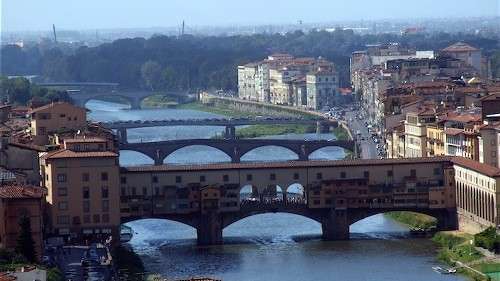Warsaw • Poland
Completely destroyed by the Nazis during World War II, Warsaw (Polish: Warszawa) is the capital of Poland, located on the Vistula River (Polish: Wisła).
The medieval capital of Poland was the southern city of Krakow, but Warsaw has been the capital of the country since 1596 and has grown to become Poland’s largest city and the nation’s urban and commercial centre.
Completely destroyed by the Nazis during World War II, the city managed to lift itself from the ashes. Today, almost every building in Warsaw dates to the postwar era – with what little remains of the old structures being confined largely to the restored districts of Stare Miasto (the ‘old city’) and Nowe Miasto (‘new city’), as well as selected monuments and cemeteries.
In 2012 Warsaw was ranked as the 32nd most liveable city in the world by the Economist Intelligence Unit. It was also ranked as one of the most liveable cities in Central and Eastern Europe. Today Warsaw is considered an Alpha– global city, a major international tourist destination and a significant cultural, political and economic hub.
A unique feature of Warsaw is its number of skyscrapers and high-rise buildings in the city centre which form the skyline. Warsaw is one of only a few cities in the European Union that have such a skyline, together with Frankfurt, London and Paris.
The first historical reference to Warsaw dates back to the year 1313 when initially Kraków served as the Polish capital city. Due to its central location between the Commonwealth’s capitals of Kraków and Vilnius, Warsaw became the capital of the Commonwealth and the Crown of the Kingdom of Poland when King Sigismund III Vasa moved his court from Kraków to Warsaw in 1596.
After the Third Partition of Poland in 1795, Warsaw was incorporated into the Kingdom of Prussia. In 1806 during the Napoleonic Wars, the city became the official capital of the Grand Duchy of Warsaw, a puppet state of the First French Empire created by Napoleon Bonaparte. With accordance to the decision of the Congress of Vienna, Warsaw in 1815 was annexed by the Russian Empire and became part of the “Congress Kingdom”.
Only in 1918 it regained independence from the foreign rule and emerged as a new capital of the independent Republic of Poland.
Along with the German invasion in 1939, the massacre of the Jewish population and deportations to concentration camps led to the uprising in the Warsaw ghetto in 1943 and to a major and devastating Warsaw Uprising between August and October 1944. For this Warsaw gained the title of the “phoenix city” because it has survived so many wars, conflicts and invasions throughout its long history.
Most notably, the city had to be painstakingly rebuilt after the extensive damage it suffered in World War II, during which 85% of its buildings were destroyed.
The historic city centre of Warsaw with its picturesque Old Town in 1980 was listed as a UNESCO World Heritage Site. Other main architectural attractions include the Castle Square with the Royal Castle and the iconic King Sigismund’s Column, St. John’s Cathedral, Market Square, palaces, churches and mansions all displaying a richness of colour and architectural detail. Buildings are representatives of nearly every European architectural style and historical period. Warsaw has wonderful examples of architecture from the gothic, renaissance, baroque and neoclassical periods and around a quarter of the city is filled with grand parks and royal gardens.






